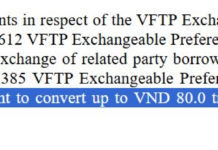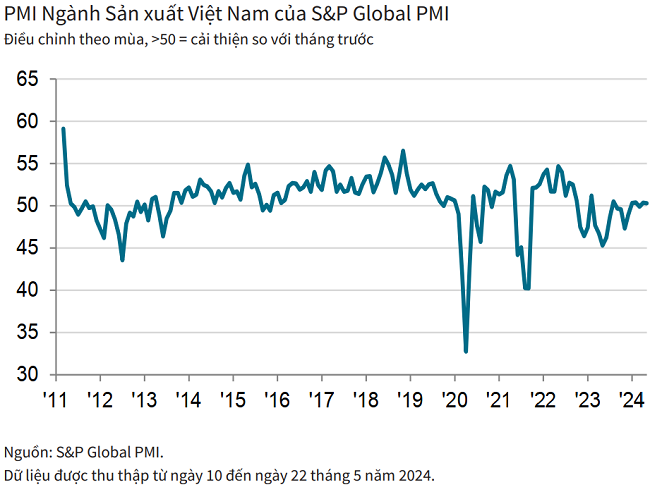On February 19, 2024, the Office of the President held a press conference to announce the decree of the President’s announcement of the Land Law and the Credit Organizations Law, which were recently approved by the 15th National Assembly at its 5th extraordinary session.
REGULATION ON ANNUAL LAND PRICING
Deputy Minister of Natural Resources and Environment, Le Minh Ngan, stated that the new Land Law consists of 16 chapters and 260 articles, which amend and supplement 180 out of 212 articles of the 2013 Land Law, with an additional 78 articles.
Accordingly, the new law has perfected the rights of Vietnamese people residing abroad. Specifically, according to the direction, Vietnamese citizens residing abroad with Vietnamese nationality have the same rights related to land as citizens in the country (domestic individuals). The regulation on land users includes household members who have the same rights and obligations as individuals using land.

The law also adds provisions on the choice of payment methods for annual land rental or one-time land rental for the entire lease period. The specific conditions for exercising the rights of economic organizations to rent land and collect land rental fees annually…
Regarding land recovery and land allocation, Deputy Minister Le Minh Ngan stated that the law specifically regulates cases where the State recovers land for socio-economic development for national interests, public interests, and the implementation of public construction projects, construction of state agency headquarters, and infrastructure projects.
Other cases include various criteria such as housing, production areas, land fund development, minerals, underground works, and cases where the State recovers land for auction, tendering to increase budget revenue…
Specific provisions regarding grounds, conditions for land recovery for defense, security, socio-economic development for national interests, public interests…

Regarding compensation, support, and resettlement when the State recovers land, the new law has amended and supplemented principles of compensation, ranging from repaying with land of the same purpose as the recovered land, or with money, with other land, or with housing.
At the same time, it specifies the principle of “having accommodation, ensuring income and living conditions equal to or better than the old place” through regulations on criteria for resettlement areas in terms of technical infrastructure, social infrastructure, and implementation location of resettlement. Resettlement areas can be arranged for one or more projects…
Notably, concerning land and finance, land prices, Ngan also said that the new law abolishes the regulations on land prices set by the Government; specifically regulates principles, grounds, and methods of land pricing.
The land pricing table is built annually and the initial land price will be announced and applied from January 01, 2026, and will be adjusted, amended, supplemented from January 01 of the following year.
The construction of the land price table is based on value areas, standardized land parcels for areas with cadastral maps and land price databases.
The law specifically regulates the time for determining land prices, the time for calculating land use fees, land rental fees for each case of land allocation, land rental, land use purpose change, land use term extension, change of land use form amending land allocation decisions, land rental agreements that cause changes in land area, land use purpose, land use term.
The competent local People’s Committee must issue a specific land price decision within 180 days from the time of determining the land price.
For cases applying land prices in the land pricing table to calculate land use fees, land rental fees, the competent People’s Committee must record the land price in land allocation decisions, land rental agreements, land use purpose change permits, use term extension, adjusted land use term, change of land use form.
The new law supplements the requirement of annual land rental fees, which will be stably applied for a 5-year period from the time the State decides on land allocation, land use purpose change. Land rental fees for the next period will be calculated based on the land price of the year determining the next land rental fee.
If land rental fees increase compared to the previous period, they will be adjusted but not beyond the rate stipulated by the Government for each phase. Decisions on specific land prices shall be made by the Chairman of the People’s Committee at the district level.
The law also specifically stipulates 4 methods of land pricing in the law, stipulates the conditions for applying each land pricing method; assigns the Government the authority to stipulate other land pricing methods after obtaining the consent of the Standing Committee of the National Assembly. In cases where land pricing methods used to determine specific land prices result in lower prices than the land price table, the land price in the land price table will be used.
REGULATIONS ON MASS WITHDRAWAL OF MONEY; LEGALIZATION OF HANDLING BAD DEBT, COLLATERAL FOR BAD DEBT
Introducing the Credit Organizations Law 2024, Deputy Governor of the State Bank of Vietnam, Doan Thai Son, said that the law consists of 15 chapters and 210 articles, with effect from July 1, 2024, and has many new points.

The law regulates the establishment, organization, operation, early intervention, special control, restructuring, dissolution, bankruptcy of credit organizations; the establishment, organization, operation, early intervention, dissolution, termination of operation of branches of foreign banks; the establishment, operation of representative offices in Vietnam of foreign credit institutions, other foreign organizations with banking activities; the handling of bad debts, collateral for bad debts of credit organizations, branches of foreign banks, organizations with 100% state capital function of purchasing, selling, handling debts.
Specifically, the law has improved regulations on raising management and governance requirements, limiting the abuse of rights of major shareholders, managerial rights, governance to manipulate the operations of credit organizations.
Accordingly, to improve the management and governance capacity, transparency of operations of credit organizations, branches of foreign banks, limit the situation of manipulation, domination of the operations of major shareholders, major shareholder groups in credit organizations, the law reduces the ownership limit of shares of organizational shareholders, of shareholder groups and related persons; provides a 5-year roadmap for gradually reducing the credit limit; amends and supplements the definition of related persons.
The new law also supplements provisions on the disclosure and publication of information by shareholders owning 1% or more of the charter capital of credit institutions, information about related persons of managers, executives of credit institutions…
The law has added requirements for commercial banks, branches of foreign banks to develop expected remedial plans in cases of early intervention. The remedial plan must be developed and approved before July 01, 2025, or within 1 year from the date of issuance of the permit.
At least every 2 years, commercial banks, branches of foreign banks must update and adjust the remedial plan to ensure its compatibility with the operational reality of the credit institution.
In addition, the law changes the approach to early intervention in credit organizations in line with international practices. According to the State Bank of Vietnam, in the spirit of remote, early, when detecting credit organizations in cases of early intervention, the State Bank of Vietnam sends a document to the credit organization, which specifies the requirements and restrictions on the credit organization, including the construction, updating of the remedial plan to rectify the weaknesses arising in the operations of the credit organization.
In the case of a credit organization successfully implementing a remedial plan and returning to normal operations, the application of restrictions and requirements of the State Bank of Vietnam also ceases.
The law also supplements provisions on mass withdrawal, in which it clearly stipulates the measures to be applied when a credit organization is involved in a mass withdrawal, including self-measures of the bank and liquidity support measures to ensure the safety of the system and protection of depositors’ interests.
Provisions on special control and restructuring plans of credit institutions, including restoration plan, merger and consolidation plan, transfer of all shares, contributed capital, compulsory transfer plan, dissolution plan, bankruptcy plan.




































